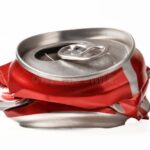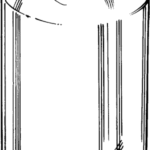Does Food Coloring Stain Clothes? Prevention, Removal, and Practical Solutions

Introduction
Food coloring is a vibrant addition to culinary creations, but its highly concentrated pigments can easily stain clothing. Whether baking, decorating, or crafting, a single drop can leave a lasting mark, especially on light-colored fabrics. This guide explores why food coloring stains clothes, how to prevent these stains, and actionable solutions for removing them using proven household methods and commercial products.
Why Does Food Coloring Stain Clothes?
Food coloring is designed to impart intense color to food and beverages. Its dyes-whether natural or synthetic-are formulated to bond with organic material, making them stubborn when they come into contact with fabric fibers. The tiny molecules penetrate deeply, especially in cotton, linen, or other absorbent materials, resulting in visible discoloration. Quick action is critical: the longer food coloring remains on clothing, the more it sets and becomes difficult to remove [1] .
Immediate Actions to Prevent Permanent Staining
If food coloring spills on your outfit, immediate response can minimize damage:

Source: silverbobbin.com
- Blot, Don’t Rub: Gently blot the stain with a clean, dry cloth or paper towel to absorb as much liquid as possible. Rubbing can push the dye deeper into the fibers [2] .
- Flush with Cold Water: Hold the stained fabric under cold running water, preferably from the back of the stain. This helps push the coloring out of the fibers, rather than further in [4] .
Step-by-Step Food Coloring Stain Removal Techniques
There are several effective methods for tackling food coloring stains, each using readily available household products.

Source: silverbobbin.com
Method 1: Dish Soap and Isopropyl Alcohol
This combination works particularly well for fresh food coloring stains.
- Mix 1 teaspoon of liquid dish soap or laundry detergent with 1 teaspoon of 70% isopropyl alcohol.
- Apply the solution to the stain and let it sit for 10-15 minutes.
- Gently agitate with a soft-bristled brush.
- Rinse thoroughly with cold water.
- Repeat as needed until the stain fades [1] .
Example: A baker splashes red gel food coloring on their white apron. By immediately applying the dish soap and alcohol mixture, the stain is lifted after two cycles of treatment and rinsing.
Method 2: Vinegar Solution
White vinegar’s acidic nature helps break down food coloring, especially natural dyes.
- Mix equal parts white vinegar and water.
- Apply directly to the stained area and let soak for several minutes.
- Blot with a clean cloth or sponge and rinse with cool water.
This method is best for lightly stained fabrics and may require repetition for synthetic dyes [2] .
Example: After decorating cupcakes, a chef finds green food coloring on their sleeve. Vinegar solution lightens the stain, followed by a standard wash for complete removal.
Method 3: Oxygen Bleach Soak
For stubborn, set-in stains, oxygen bleach (e.g., OxiClean) offers a powerful, fabric-safe solution.
- Mix oxygen bleach with water as per package instructions.
- Soak the garment for at least 8 hours, or overnight.
- Launder as usual.
Oxygen bleach is less harsh than chlorine bleach and works on both colored and white fabrics [4] .
Method 4: Baking Soda Paste
Baking soda can be combined with water or vinegar to create a paste that lifts stains.
- Mix baking soda with water to form a thick paste.
- Apply to the stain and let sit for 20 minutes.
- Rinse and gently rub with a soft cloth.
This approach is gentle and ideal for delicate fabrics [3] .
Method 5: Commercial Stain Removers
Products like Oxi Booster Pods and stain & odor laundry pods are formulated to tackle dye-based stains. Follow manufacturer instructions for dosing and soaking times [2] .
Alternative Approaches and Additional Tips
- Hydrogen Peroxide: For white or colorfast fabrics, diluted hydrogen peroxide can help remove persistent stains. Always test on a hidden area first [3] .
- Lemon Juice and Salt: Cover the stain with salt, add lemon juice, and rub gently. After drying, rinse thoroughly [3] .
- Professional Cleaning: For valuable or delicate garments, consider consulting a professional cleaner. They use specialized solvents and techniques for dye-based stains.
Potential Challenges and Solutions
Set-In Stains: If food coloring dries or sets, removal becomes more difficult. Multiple cycles of soaking, agitation, and rinsing increase success rates.
Fabric Type: Natural fibers (cotton, linen) absorb dyes more readily than synthetics (polyester, nylon). Always check garment care labels before applying treatments [5] .
Color Loss: Aggressive stain removal can lighten the original fabric color. Test all products on an inconspicuous area first and use gentle methods when possible.
Step-by-Step Guide for Difficult Stains
- Remove excess food coloring by blotting, not rubbing.
- Flush with cold water from the back of the stain.
- Apply a stain remover (dish soap/alcohol, vinegar, oxygen bleach).
- Agitate gently with a soft brush.
- Soak if necessary (oxygen bleach or baking soda paste for persistent stains).
- Launder using regular detergent, preferably in cold water.
- Inspect before drying; repeat process if stain remains, as heat can set the stain permanently.
Prevention Strategies
Prevention is easier than removal. Here’s how to reduce risk:
- Wear an apron or old clothes when working with food coloring.
- Work over easy-to-clean surfaces and keep stain removal ingredients nearby.
- Handle food coloring containers with care and store them upright.
Accessing Cleaning Products and Services
Most cleaning products mentioned are available at major retailers and supermarkets. If you prefer eco-friendly or specialty options, search for oxygen bleach or stain-removal pods from established brands. For professional cleaning, contact local dry cleaners and inquire about dye stain removal services-search for “professional garment cleaning” or “stain removal services” in your area for more options.
Key Takeaways
Food coloring can stain clothes, but quick action and the right cleaning methods can often restore your garments. Household items like vinegar, baking soda, dish soap, and isopropyl alcohol are effective, while commercial products offer added convenience. For persistent or valuable stains, professional cleaning may be necessary. Always test stain removal methods first and follow garment care instructions for best results.
References
- [1] TheStainGuide (2025). How to Remove Set-In Food Coloring Stains From Clothing.
- [2] Dropps (2024). How to Get Food Coloring Out of Clothes – Full Guide.
- [3] Cleanzen (2024). How to Remove Food Coloring Off Counter.
- [4] Chefmaster (2022). Getting Rid of Food Coloring Stains.
- [5] University of Georgia Extension (2024). Remove Stains From Dye (Hair, Food Coloring, Other).






